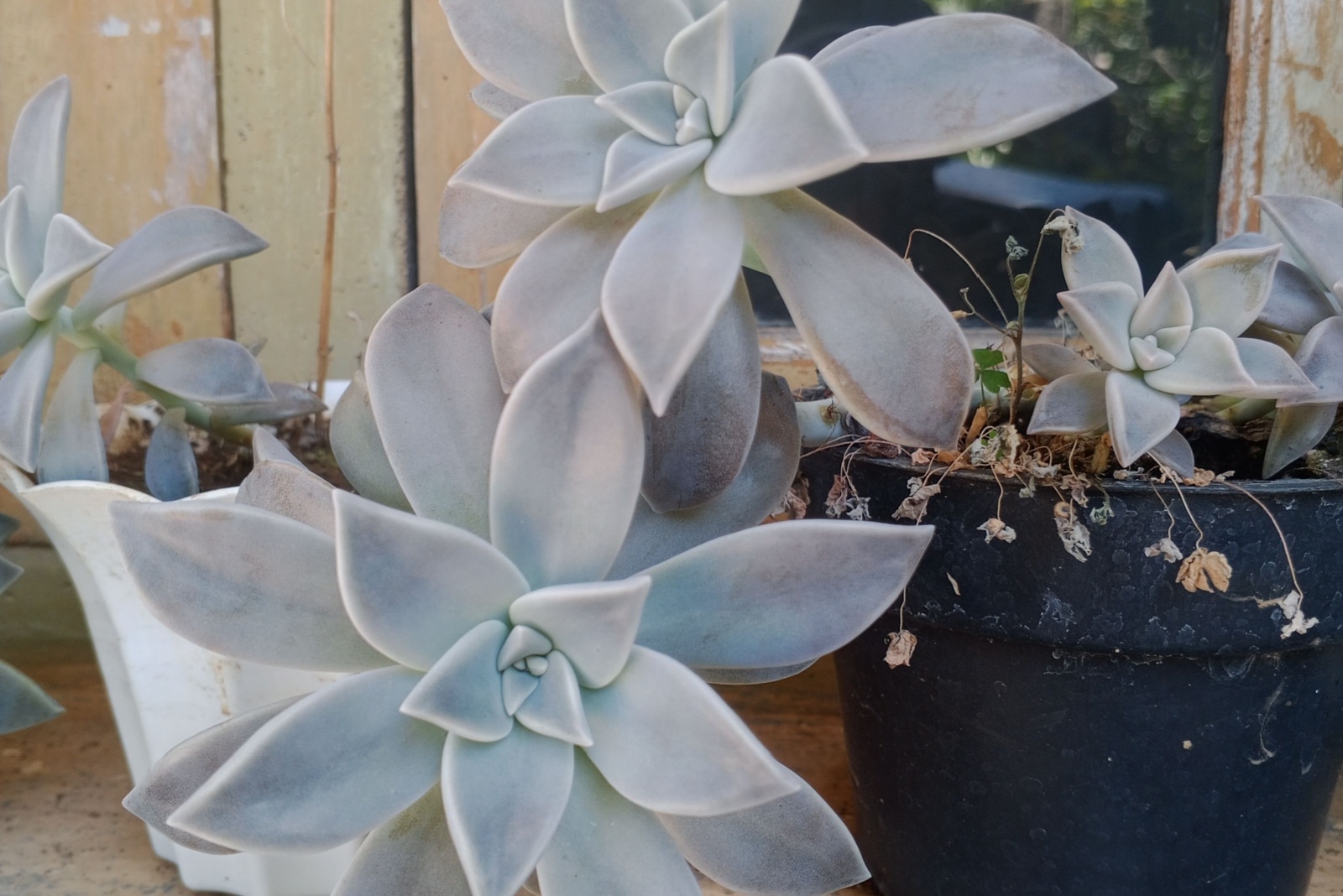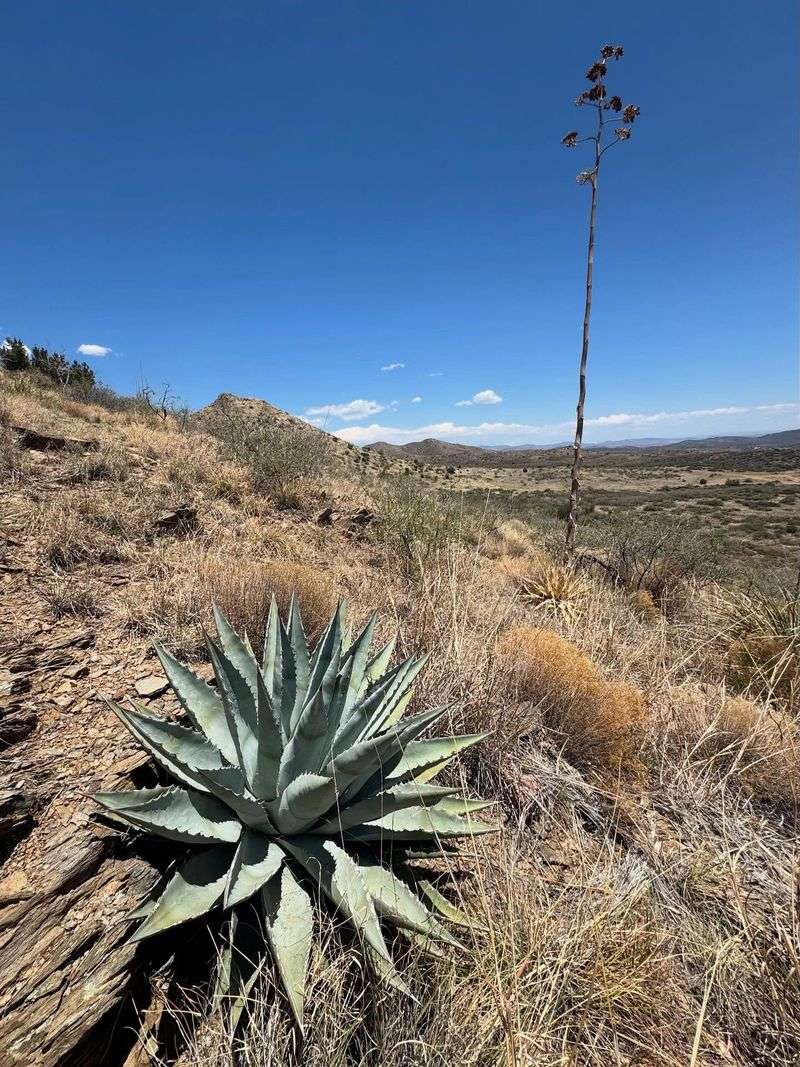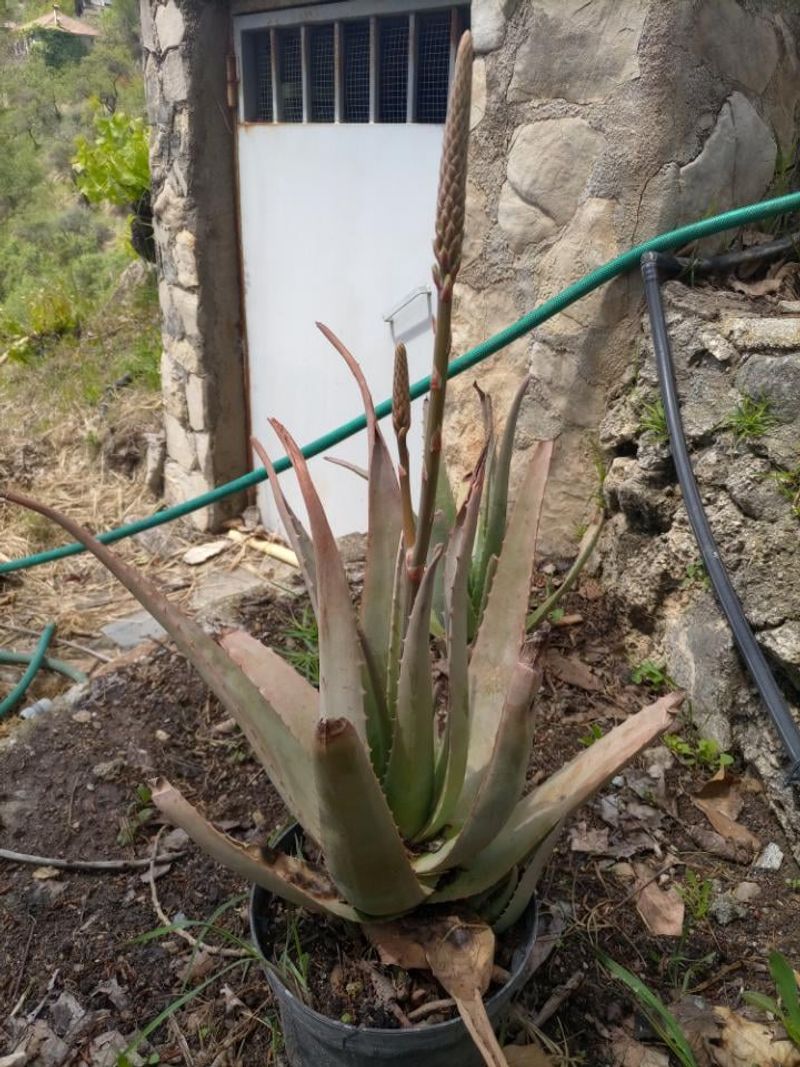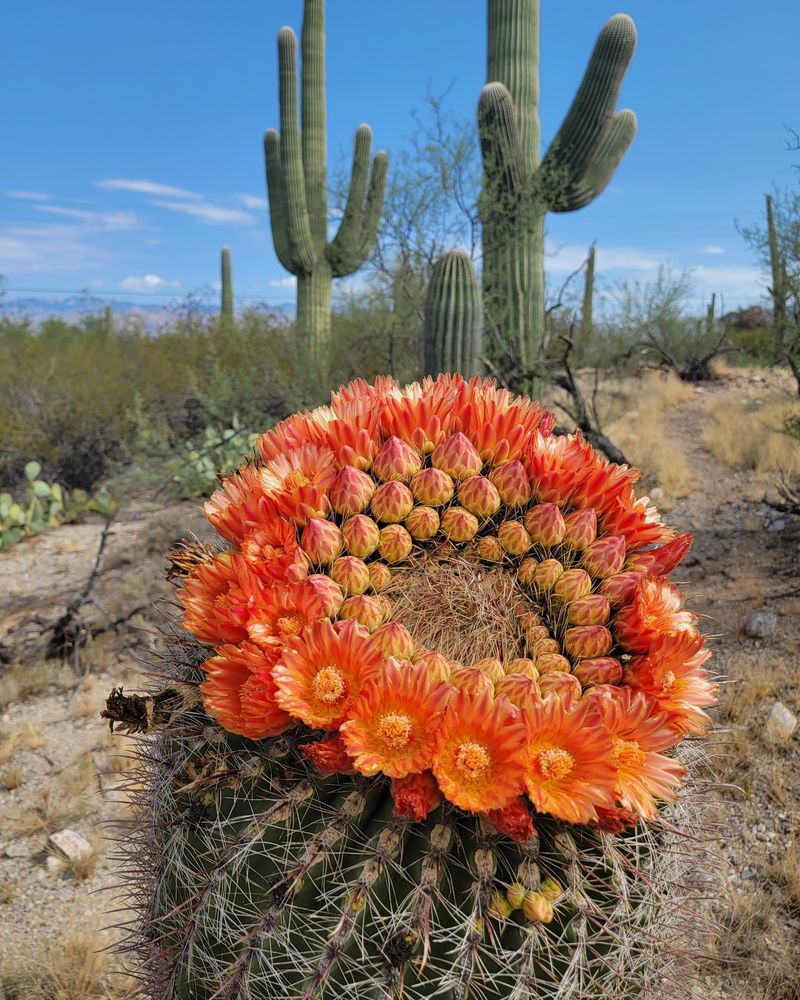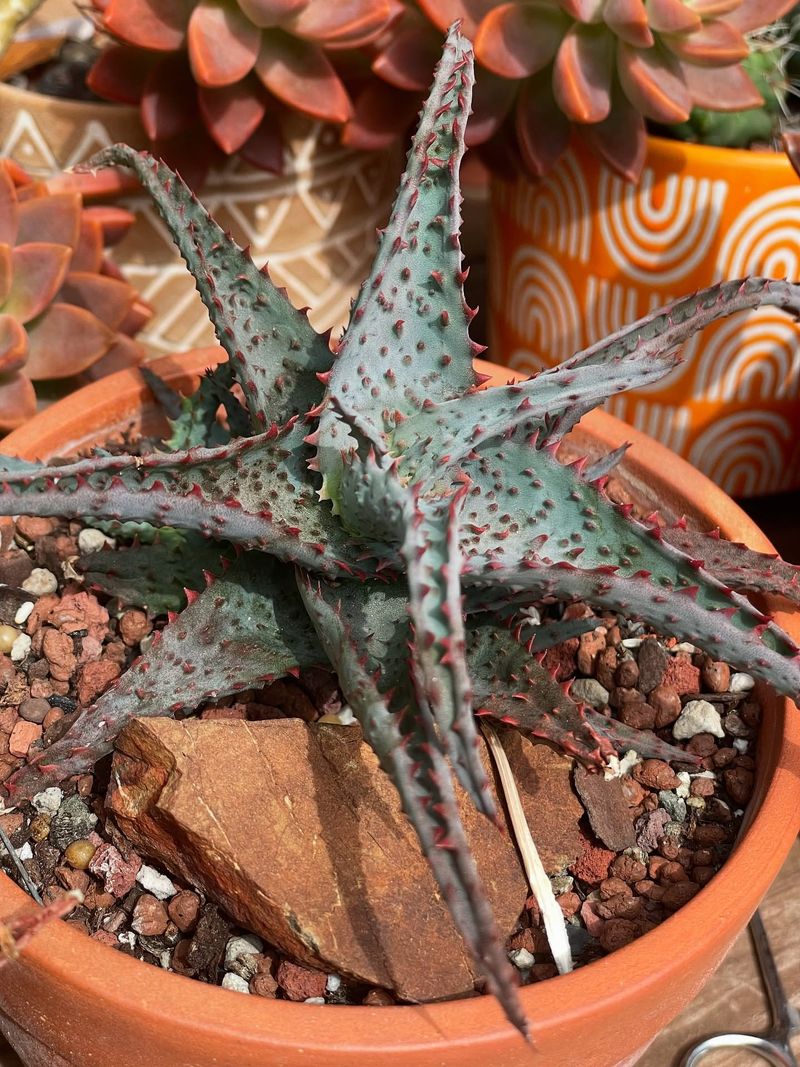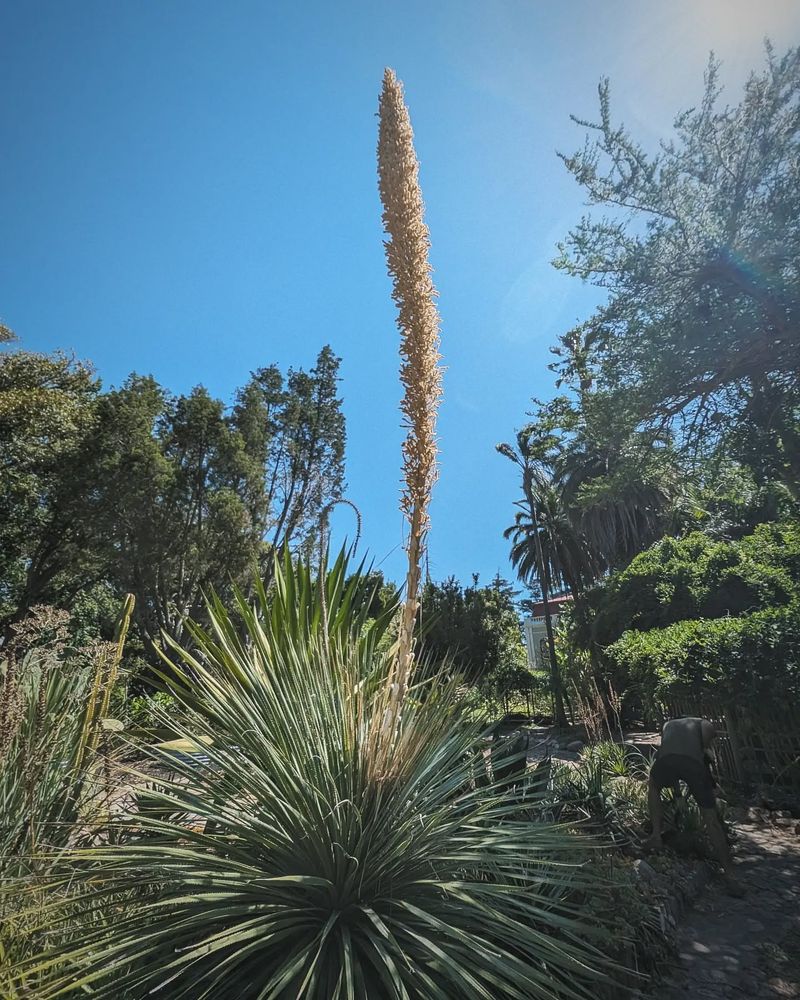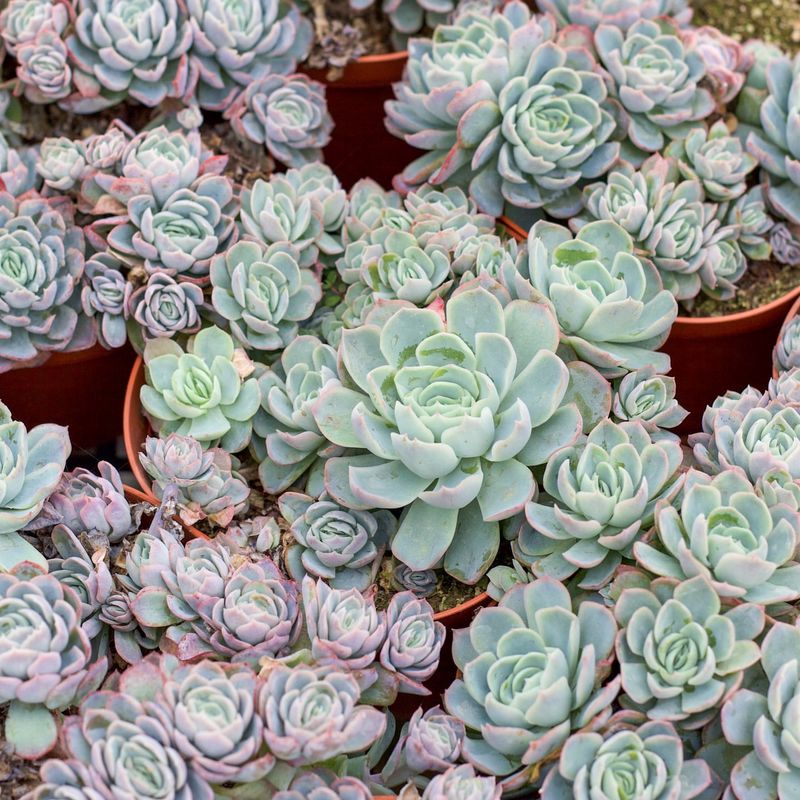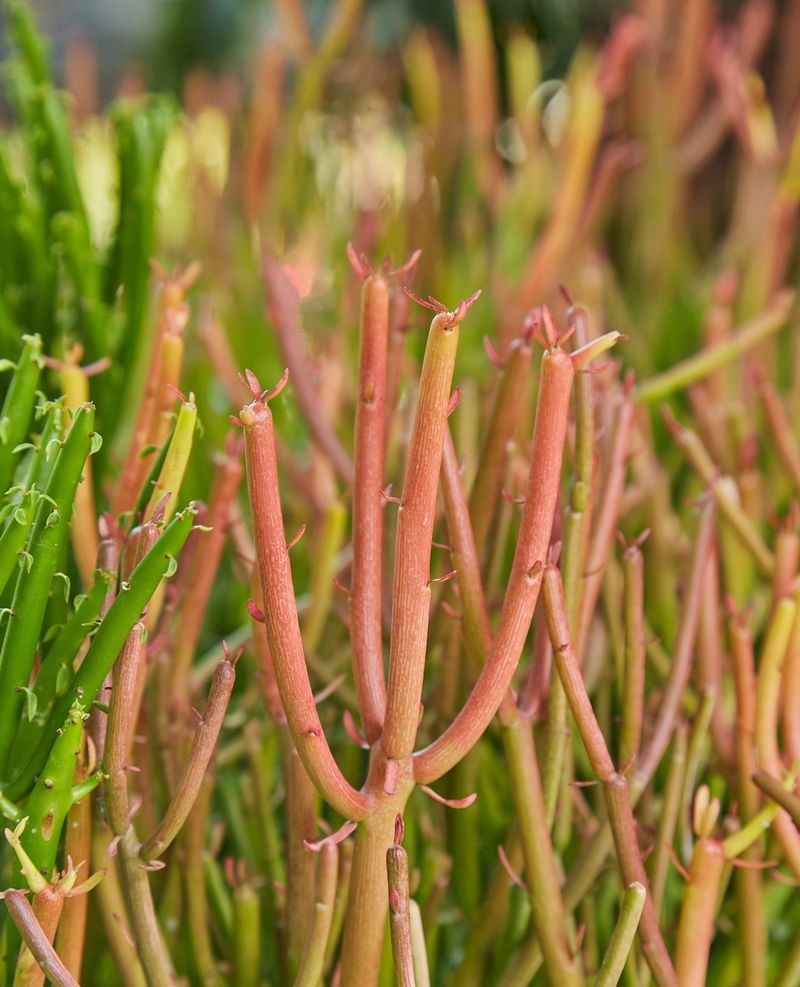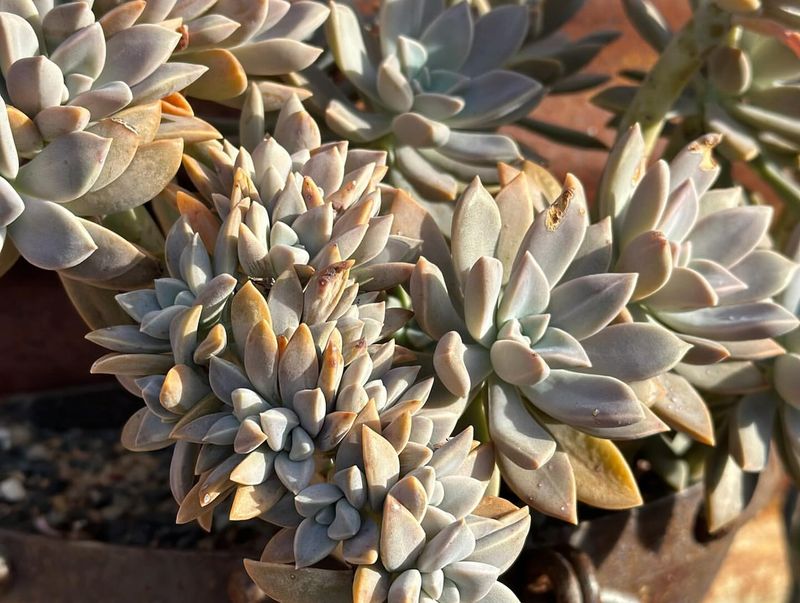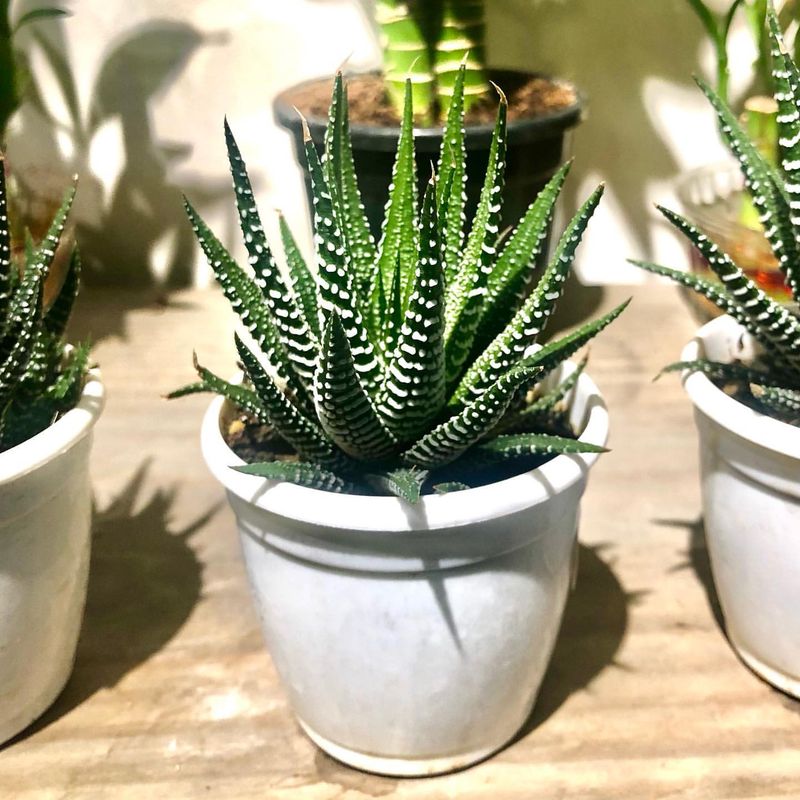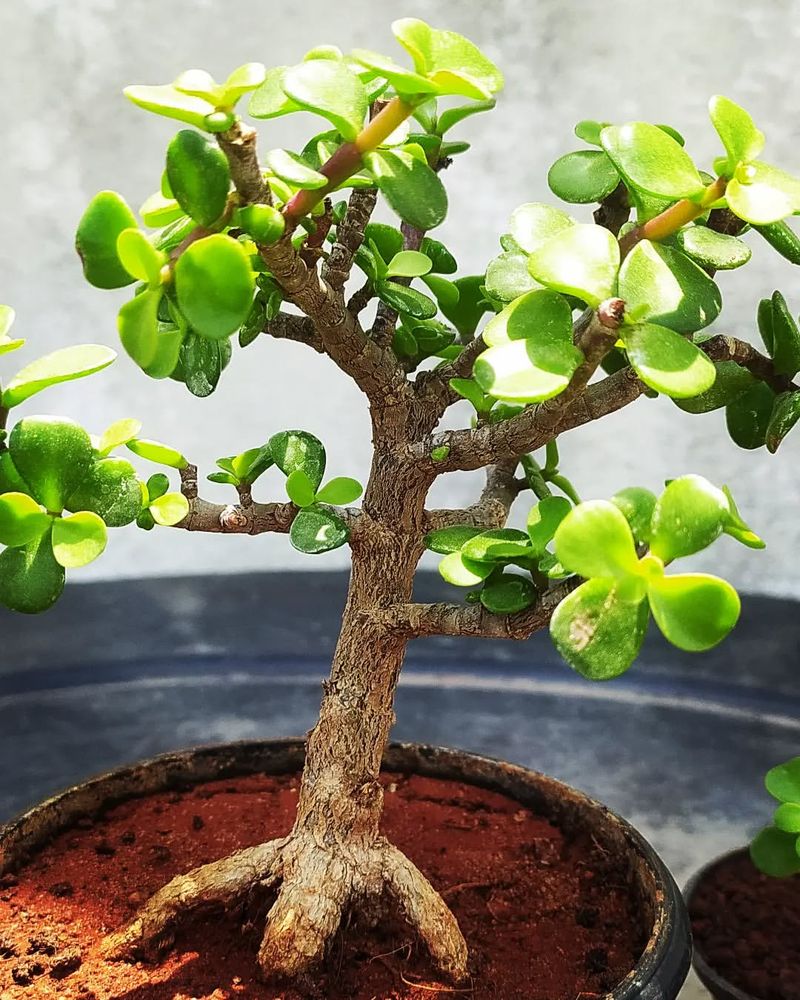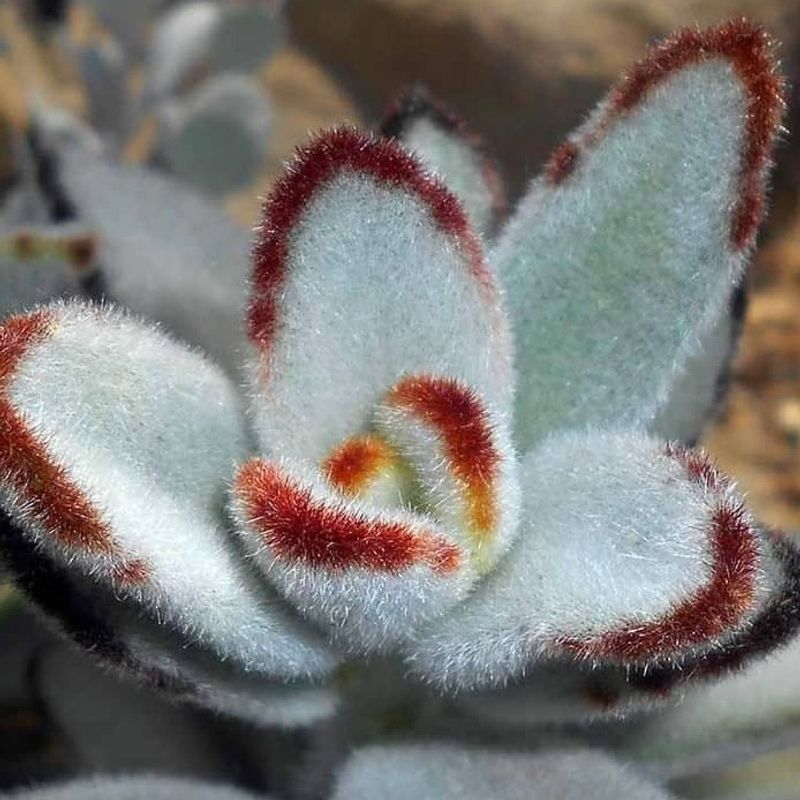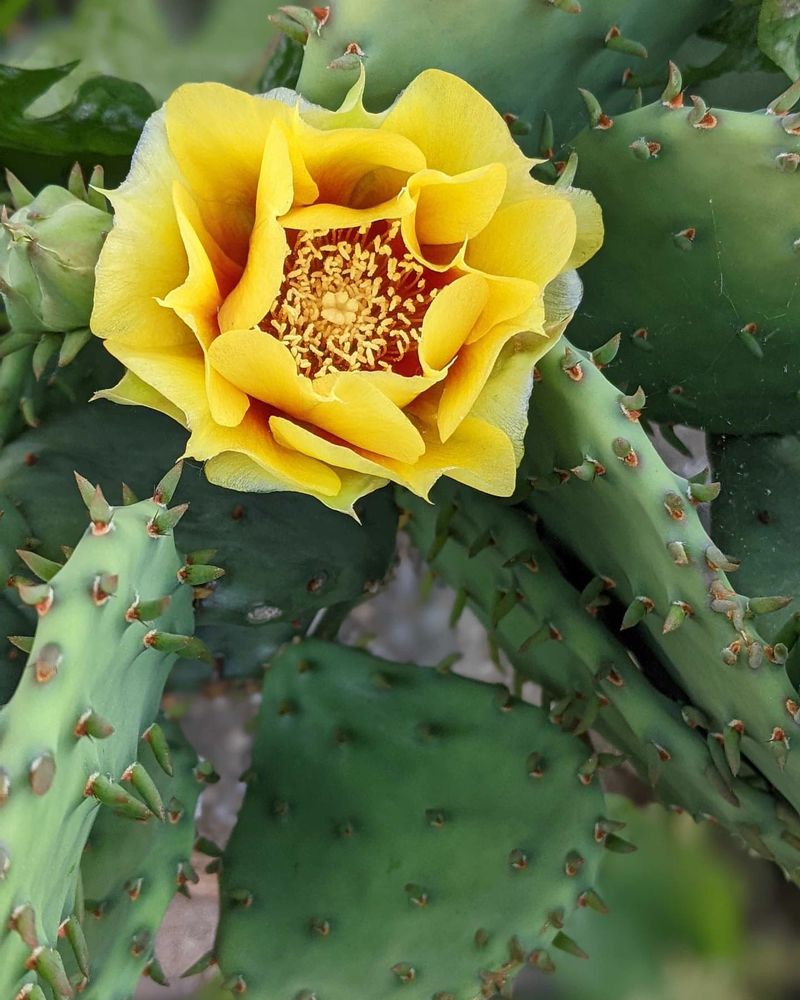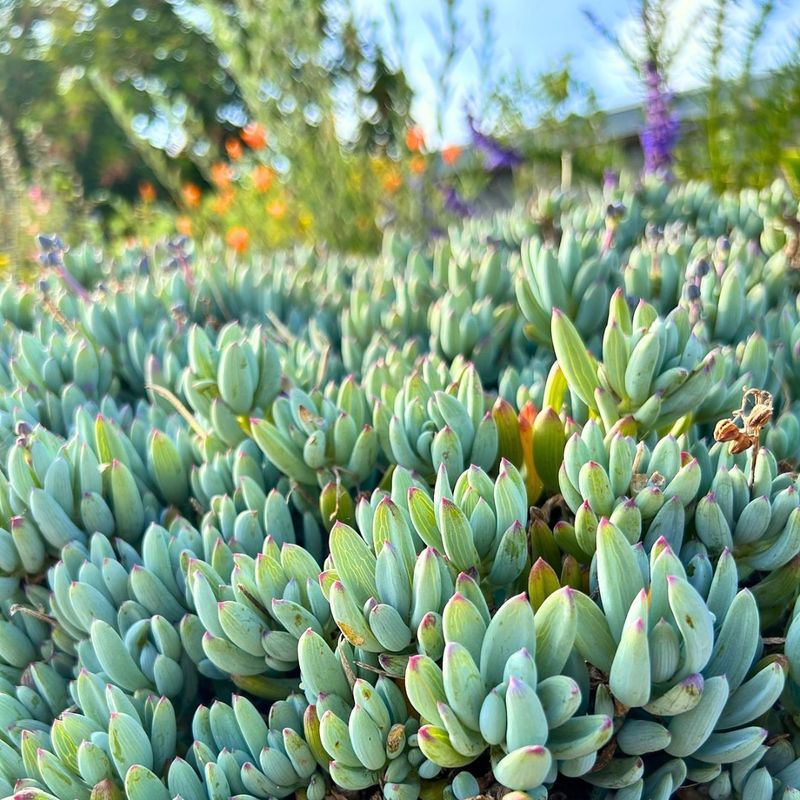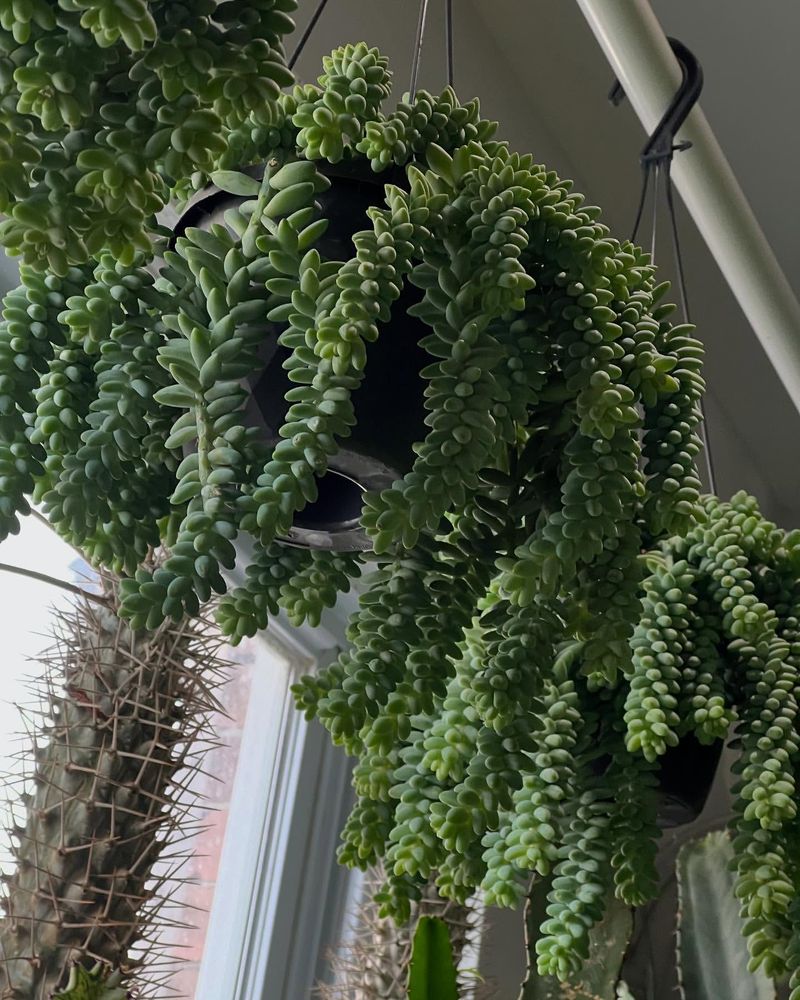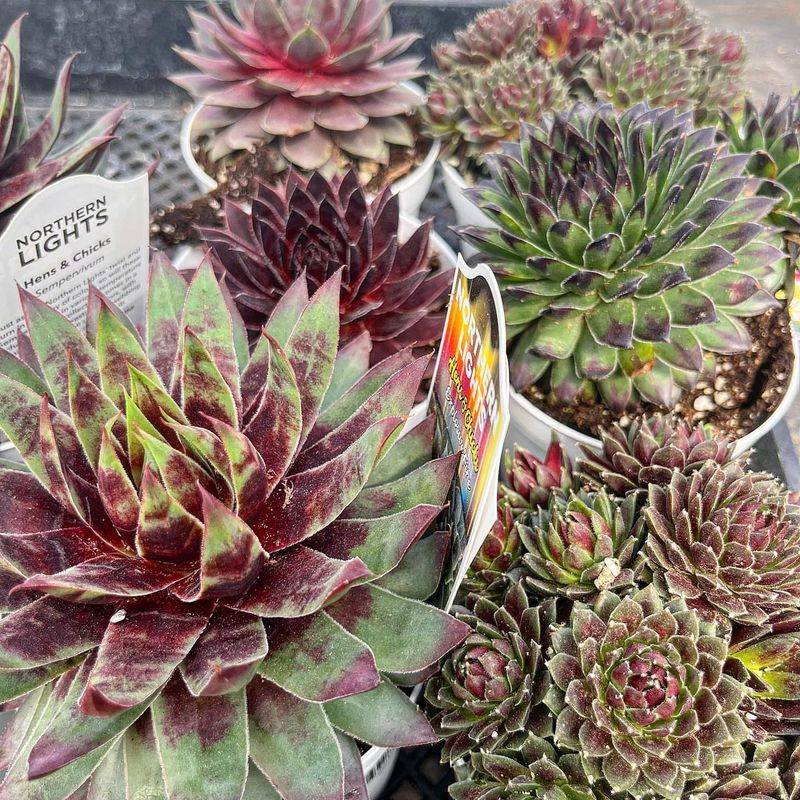Living in Nevada means dealing with scorching sun, minimal rainfall, and challenging growing conditions. Succulents offer a perfect solution for local gardeners since these water-storing plants thrive in our harsh desert environment.
With their striking forms and minimal care requirements, these hardy plants can transform your yard into a beautiful landscape that actually enjoys our intense climate.
1. Agave Parryi (Mescal Agave)
Striking blue-gray rosettes make Mescal Agave a showstopper in any Nevada landscape. Native to similar arid regions, this architectural plant handles temperature swings like a champion.
Once established, it rarely needs supplemental water, making it perfect for busy homeowners. The dramatic flowering stalk that emerges after several years reaches up to 15 feet tall, creating a magnificent desert spectacle before the plant completes its lifecycle.
2. Aloe Vera
Beyond its medicinal benefits, Aloe vera thrives in Nevada’s challenging climate. The fleshy, serrated leaves store water efficiently, allowing the plant to withstand extended dry periods with ease.
Growing up to two feet tall, Aloe produces dramatic orange-yellow flower spikes in winter that attract hummingbirds. Keep it in a container if winters drop below 20°F in your area – this allows you to bring it indoors during rare freezing spells.
3. Barrel Cactus (Ferocactus)
Round and ribbed with impressive spines, Barrel Cactus brings southwestern character to Nevada gardens. Yellow or orange flowers crown these living sculptures in summer, followed by yellow fruits that persist through winter.
Many varieties grow perfectly straight despite the prevailing wind direction – earning them the nickname “compass cactus.” With minimal water needs and tolerance for poor soil, these long-lived plants (some reaching 100+ years) make excellent statement pieces in rock gardens.
4. Blue Elf Aloe
Petite yet powerful, Blue Elf Aloe packs stunning color into a compact package. Its blue-green leaves turn purplish in winter, adding seasonal interest to your landscape without extra effort.
Coral-orange blooms appear on slender stalks in late winter, providing crucial nectar for early pollinators. Unlike some larger aloes, Blue Elf stays manageable at just 18 inches tall and wide, making it perfect for borders, containers, or mass plantings where you need reliable color year-round.
5. Cholla Cactus (Cylindropuntia)
Sporting a distinctive branching structure that creates interesting shadows, Cholla adds vertical drama to Nevada gardens. The cylindrical segments covered in barbed spines glow beautifully when backlit by the setting sun.
Spring brings showy flowers in shades of pink, purple, or yellow, depending on variety. Birds often nest among the protective branches, bringing wildlife interest to your yard. Plant where people won’t brush against it – those barbed spines have earned Cholla the nickname “jumping cactus” for good reason!
6. Desert Spoon (Dasylirion wheeleri)
Resembling a giant pincushion, Desert Spoon creates bold texture with its thousands of slender blue-green leaves radiating from a central trunk. Each leaf ends in a spoon-shaped base (hence the name) and sharp tip for excellent drought defense.
Mature plants send up spectacular 10-15 foot flowering stalks covered in tiny cream flowers that attract beneficial insects. The trunk eventually rises above ground, creating a tree-like appearance that makes Desert Spoon a magnificent focal point in xeriscaped Nevada yards.
7. Echeveria Elegans (Mexican Snowball)
Pale blue-green rosettes form perfect geometric patterns in this crowd-pleasing echeveria variety. Looking like something from another planet, Mexican Snowball adds soft color and form to Nevada gardens.
Pink stems hold bell-shaped flowers above the foliage in spring. While not completely frost-hardy, this beauty thrives in containers that can be moved to protected spots during rare cold snaps. Group several together for a stunning display that requires almost no maintenance beyond occasional water during extended dry spells.
8. Euphorbia Tirucalli ‘Sticks on Fire’
Resembling coral with its pencil-thin branches, ‘Sticks on Fire’ creates a fiery focal point in Nevada landscapes. The leafless stems shift from green to brilliant orange-red during cooler months, intensifying with sun exposure.
Growing up to 8 feet tall in ideal conditions, this architectural plant needs zero pruning to maintain its striking form. Beware the milky sap which irritates skin – wear gloves when handling. In areas with winter freezes, grow in containers to bring indoors when temperatures threaten to drop below 30°F.
9. Graptopetalum paraguayense (Ghost Plant)
Rosettes of pale grayish-lavender leaves that resemble stone give Ghost Plant its otherworldly appearance. The color changes subtly with sun exposure – more shade brings greener tones, while full Nevada sun intensifies the ghostly pallor.
Trailing stems create beautiful cascades when planted in raised beds or containers. Spring brings starry yellow flowers on thin stems. Ghost Plant propagates effortlessly from fallen leaves, allowing you to expand your collection or share with friends without spending extra money on new plants.
10. Haworthia fasciata (Zebra Plant)
Distinctive white horizontal stripes on dark green leaves make Zebra Plant instantly recognizable. Small enough to fit on a windowsill, this South African native thrives in Nevada’s bright indirect light.
Unlike many succulents, Haworthia prefers morning sun and afternoon shade, making it perfect for east-facing spots. The rosettes slowly multiply into clusters over time. White tubular flowers appear on thin stalks but remain fairly inconspicuous – the striking foliage pattern is the real show-stopper here.
11. Jade Plant (Crassula ovata)
Glossy oval leaves on woody stems give Jade Plants a miniature tree appearance that improves with age. Often passed down through generations, these long-lived plants symbolize prosperity in many cultures.
Jade handles Nevada’s dry indoor air beautifully, making it an excellent houseplant during winter. Move containers outdoors to protected spots during warm months. With proper care, Jade rewards gardeners with clusters of star-shaped pink-white flowers in winter, though plants need to be mature and slightly stressed (less water) to bloom.
12. Kalanchoe tomentosa (Panda Plant)
Fuzzy gray-green leaves edged in chocolate brown make Panda Plant irresistibly touchable. The soft texture comes from tiny hairs that help the plant conserve moisture – a perfect adaptation for Nevada’s dry climate.
Staying compact at under 2 feet tall, this Madagascar native works well in mixed containers or as a standalone specimen. Rarely flowering in cultivation, Panda Plant is grown primarily for its distinctive foliage. The velvety leaves resist both drought and pests, making this an exceptionally easy-care choice for beginners.
13. Opuntia (Prickly Pear)
Flat, paddle-shaped pads and colorful fruits make Prickly Pear both ornamental and useful in Nevada landscapes. The spring flowers range from yellow to red depending on variety, creating spectacular desert color.
Many spineless varieties exist for family-friendly gardens. The edible pads (nopales) and fruits (tunas) offer culinary possibilities beyond mere decoration. Extremely drought-tolerant once established, Prickly Pears can survive solely on natural rainfall in most Nevada locations, making them truly sustainable landscape choices.
14. Portulacaria afra (Elephant Bush)
Tiny round leaves on reddish stems give Elephant Bush a delicate appearance that belies its tough nature. In its native South Africa, elephants munch on these plants – hence the common name.
Growing up to 6 feet in ideal conditions, Elephant Bush can be trained as a bonsai or allowed to develop into a small shrub. The fleshy stems store water efficiently, allowing the plant to thrive with minimal irrigation in Nevada gardens. Variegated forms with cream-edged leaves add extra visual interest.
15. Senecio serpens (Blue Chalksticks)
Finger-like blue-gray stems create gorgeous groundcover carpets in Nevada gardens. The powdery coating on Blue Chalksticks reflects sunlight and conserves moisture – nature’s perfect design for desert conditions.
Growing just 12 inches tall but spreading wider, this South African native fills spaces beautifully without becoming invasive. Small white flowers appear occasionally but remain insignificant compared to the striking foliage color. Plant between stepping stones or along pathways where the blue-gray color contrasts beautifully with tan hardscaping elements.
16. Sedum morganianum (Burro’s Tail)
Trailing stems covered in plump, overlapping leaves create living curtains of green when Burro’s Tail is planted in hanging baskets. The cylindrical leaves easily detach when touched – a propagation strategy that makes this plant particularly generous.
Native to Mexico, Burro’s Tail appreciates Nevada’s bright light but needs protection from afternoon sun in the hottest locations. Pink star-shaped flowers occasionally appear at stem tips but remain rare in cultivation. Position containers where the trailing stems can be admired without being bumped to preserve the distinctive appearance.
17. Sempervivum (Hens And Chicks)
Forming tight rosettes that multiply into colonies, Hens and Chicks earned their name from the way “mother” plants produce numerous “babies” around their base. Available in countless color variations from green to purple to red, these cold-hardy succulents thrive in Nevada’s temperature extremes.
After several years, mature rosettes produce tall flower stalks in summer – a final spectacular display before that particular rosette dies (though the offsets continue growing). Plant in rock gardens, wall crevices, or shallow containers where their spreading habit creates living carpets of color.

